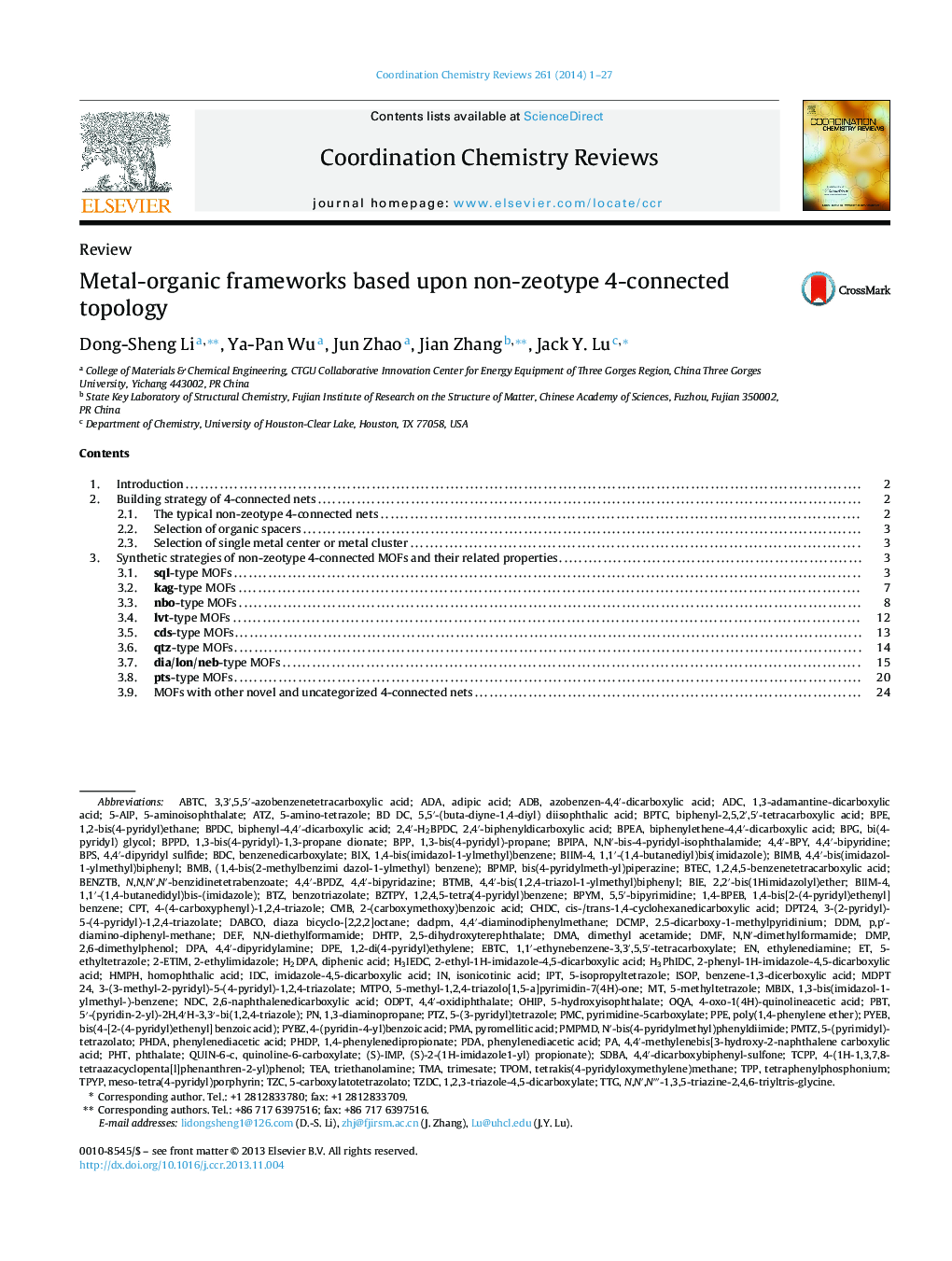| Article ID | Journal | Published Year | Pages | File Type |
|---|---|---|---|---|
| 1301027 | Coordination Chemistry Reviews | 2014 | 27 Pages |
•Building strategies for the design and construction of 4-connected MOFs have been discussed.•MOFs with 4-connected could be rationally modulated by modifying the traits of organic tectons.•Network esthetics and their related properties of the more common non-zeotype 4-connected MOFs have been illustrated.
In order to further design and successfully prepare for the functional metal-organic framework materials, it is essential to understand the fundamental correlations between the composition, physical properties and topology of the underlying nets. In this review, we focus on recent advances in metal-organic frameworks (MOFs) that possess more common non-zeotype 4-connected topological nets (such as sql, kag, nbo, lvt, cds, qtz, dia, lon, pts, etc.), and discuss the synthetic strategies of non-zeotype 4-connected MOFs and their related properties. In particular, we emphasize how to establish basic design principles and synthetic methodology to construct the same topological MOFs with different functions using specifically designed organic linkers.
Graphical abstractIn this review, we focus on the recent advances in metal-organic frameworks (MOFs) that possess more common non-zeotype 4-connected topological nets (such as sql, kag, nbo, lvt, cds, qtz, dia, lon, pts, etc.), and discuss the synthetic strategies of non-zeotype 4-connected MOFs and their related properties. Particularly, we emphasize how to establish basic design principles and synthetic methodology to construct the same topological MOFs with different functions using specifically designed organic linkers.Figure optionsDownload full-size imageDownload high-quality image (151 K)Download as PowerPoint slide
